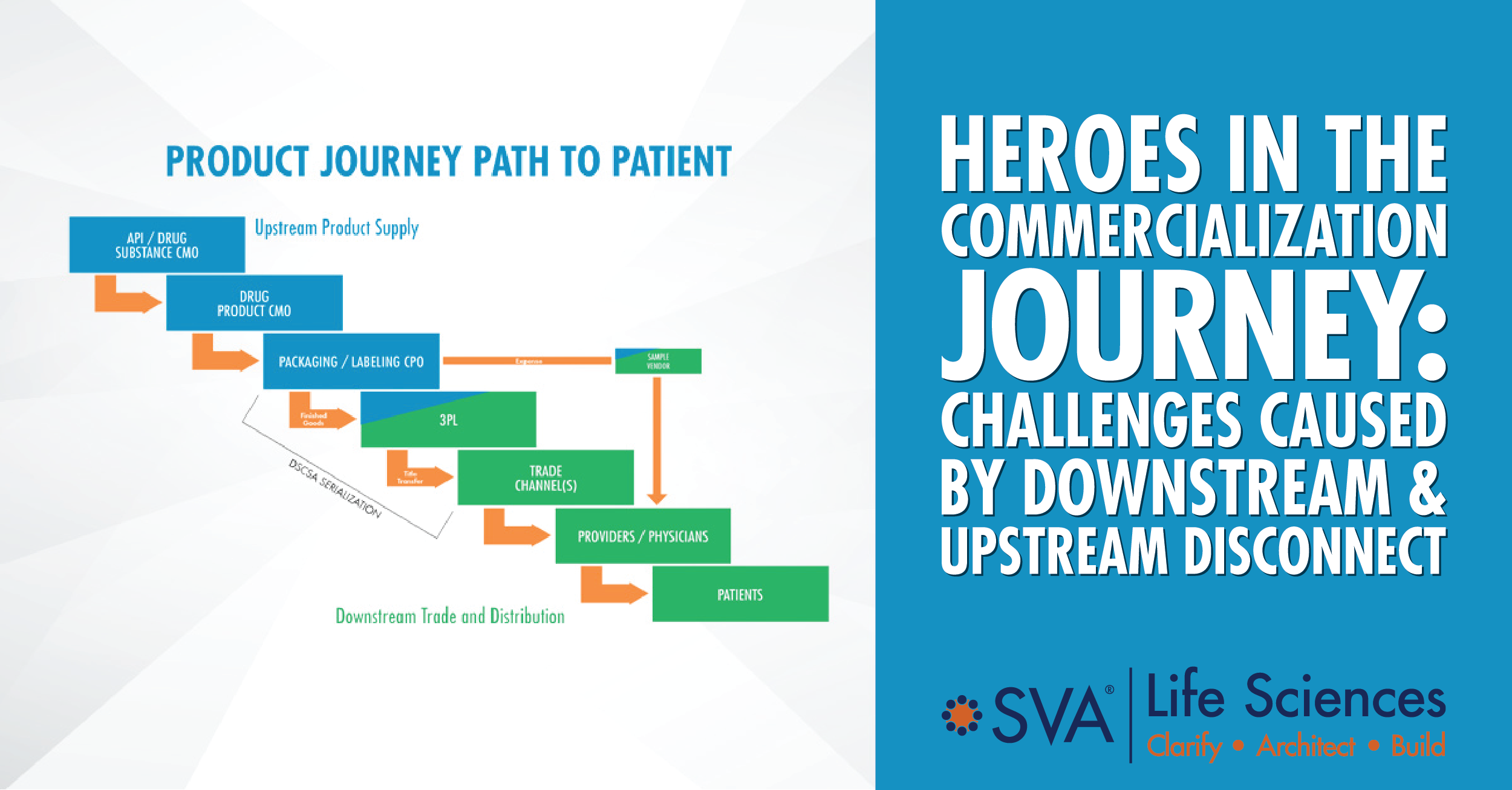We’ve been discussing the importance of an emerging biopharma company’s supply chain team in our recent blog series, “Heroes in the Commercialization Journey.” We introduced 3 common problems we see arise in a new product’s supply chain. The first topic centered on common problems in the upstream supply group, the second topic focused on the downstream supply group, and this third and final topic covers challenges caused by a disconnect between the two channels.
Establish Cross-Functional Teams
Cross-functional teams are critical to maintaining efficiency and productive collaboration between the upstream and downstream groups. First, we recommend forming a launch demand and supply planning process and team to be responsible for building all the capabilities supporting a Sales and Operations Planning (S&OP) process. Once the product is in market, this team will nurture important collaboration between Technical Operations/Supply Chain, Clinical, QA, Commercial, and Finance.
Additionally, we suggest establishing a cross-functional team responsible for product labelling to address all primary and secondary labelling. The team should include Regulatory, Supply Chain, QA, and Marketing who understand the competitive landscape and potential market access challenges and who will address logo design, brand naming, color palettes, language(s), primary packaging/closure labelling, secondary and tertiary package labelling, serialization, and aggregation.
Downstream and Upstream Disconnect: Finding a Holistic View
A disconnected team can result in lost time and investments and is a dangerous opportunity for error. To avoid this, leadership, cross-functional teams, and other personnel need to be able to center themselves on a comprehensive, cross-functional supply chain plan. Without a holistic view of both the upstream and downstream functions, a major disconnect occurs; the groups operate and make decisions independently.
A cohesive plan not only informs interdependencies and expectations between the two groups, it also fosters essential collaboration and communication by bringing the groups together. The plan should consist of processes, workstreams, and timelines mapped out in a way that provides an overall picture. When there is clarity around roles and responsibilities in each function and between functions, the plan will easily facilitate strategic and tactical decisions.
As we discussed in previous posts in this series, as important as it is to properly invest in and prepare the upstream team and make essential downstream leadership hires in a timely manner, it’s equally important to make sure key cross-functional teams are established and that groups from both functions have a reliable system in place to communicate.
We would love to hear your feedback on this series and we welcome any questions you may have.

© 2021 SVA Life Sciences

